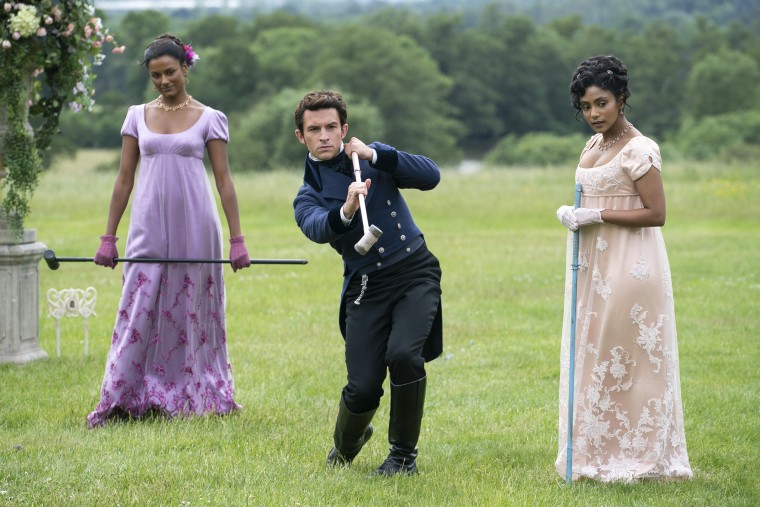Season two of "Bridgerton" premiered on March 25, and fans returned to the world of 1814 Mayfair to see watch another happy ending play out, amid matchmaking attempts and plenty of scandal.
Inspired by Julia Quinn's novels of the same name, the show is set in the Regency period of England's history — and has the vocabulary to prove it.
In the world of "Bridgerton," characters "court" instead of date, they buy dresses from a "modiste," not at the mall; and they definitely don't play croquet. Rather, they play a precursor to the game known as pall-mall.
Pall-mall is the Bridgerton family's favorite countryside game, one that brings out the siblings' competitive spirits (especially Anthony's). But what is pall-mall? In a behind the scenes video from Netflix, some of the stars of "Bridgerton" confess their own confusion.
"Pall-mall is a game I do not and will never understand," Claudia Jessie, who plays Eloise, said in the video. "But you've got a mallet and you whack a ball through some pegs, numbered pegs, until someone wins."
Pall-mall is just the beginning of the show's Regency-era conventions, which are likely unfamiliar to modern audiences. If you're looking to learn the lingo of the Regency period, and maybe include it in your own daily repertoire, read on for a "Bridgerton" glossary.
Ancestral Home
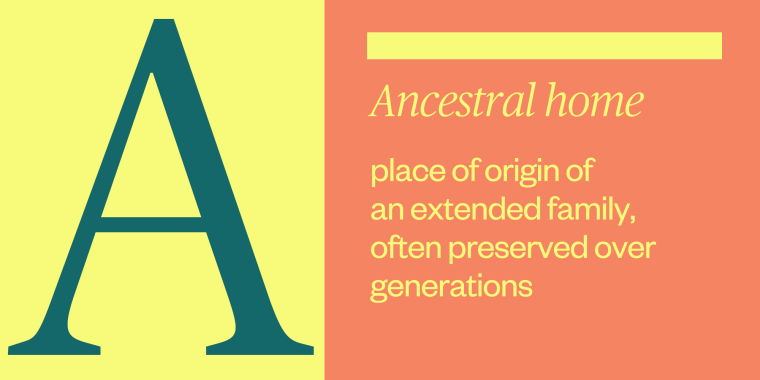
Definition: a place of origin of an extended family, often preserved over generations
How it’s used in "Bridgerton:" Season one of "Bridgerton" mostly takes place at the Bridgerton family's house in London's Grosvenor Square. Fun fact: Princess Diana's ancestral home of Althorp inspired some of the set details.
The Bridgerton family's true roots are in the country, though, at their ancestral home of Aubrey Hall. The grand home is the site of a family tragedy: It was there that Edmund Bridgerton died from a bee sting.
Courtship
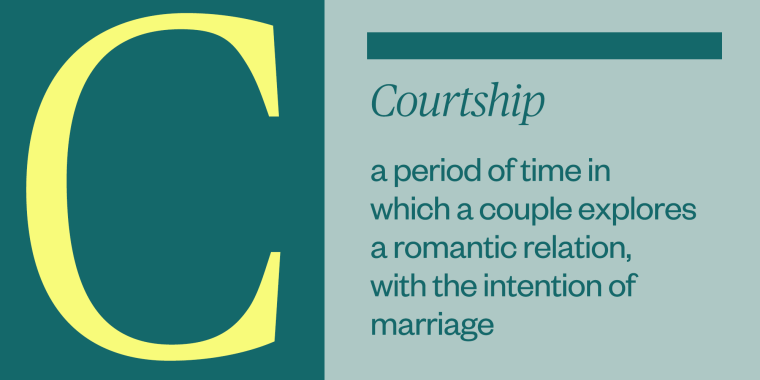
Definition: a period of time in which a couple explores a romantic relation, with the intention of marriage
In the world of "Bridgerton," first comes courtship, then comes marriage.
"All of the structures of the London social season were in part about trying to give eligible men and eligible women the opportunity to meet, spend time together and hopefully, by the end of the season, find someone suitable to marry," said Hannah Greig, a professor at the University of York and a historical advisor for "Bridgerton."
Courtship rituals included attending the theater; dancing at a ball; promenading; and even making a private house call. During a house call, a bachelor stopped by the lady's home to talk — under the watchful eye of a chaperone, of course.
From there, the attachment could grow through further invitations to private balls and events, ideally culminating in a proposal of marriage before the end of the season, Greig said.
How it's used in "Bridgerton:" In season one, the sham courtship of Simon (Regé Jean-Page) and Daphne (Phoebe Dynevor) is equivalent to the modern trope of "fake dating." For Daphne, it made her look more desirable to other suitors, while Simon appeared unavailable.
In the first episode of season two, Anthony meets with many, many young ladies, but finds none suitable for courtship or marriage. That is until he meets Edwina Sharma (Charithra Chandran), the diamond of the season, and her sister, Kate (Simone Ashley).
Season two also demonstrates how women had limited agency in the courtship process: Edwina needs Anthony to advance their relationship.
"Women can show their interest in men, they can smile ... But women essentially have to wait for men to propose marriage," as Juliette Wells, a professor of literary studies at Goucher University, points out.
Dance Card
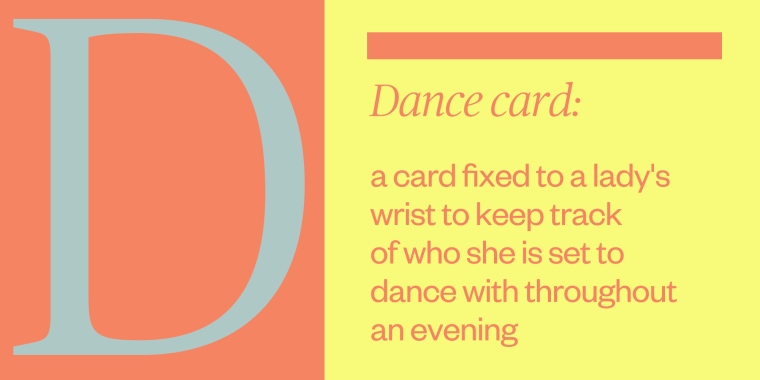
Definition: a card fixed to a lady's wrist to keep track of who she is set to dance with throughout an evening
Balls in Regency England were well-planned events, with a clear schedule of music and dances. Dance cards, which first emerged in Vienna, helped the night go by with ease. After a gentleman asked a lady to dance, he penciled his name in on her dace card. A full dance card meant the lady was in high demand as a partner for the evening.
How it's used in "Bridgerton:" After making her social debut in season two, Eloise avoids mingling with potential suitors by writing down fake names on her dance card.
Debutante
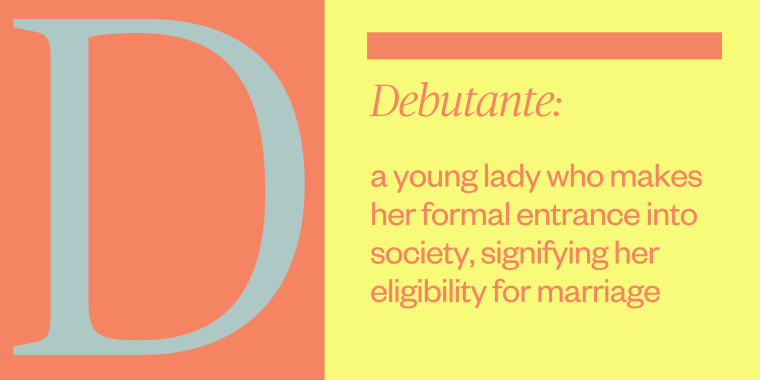
Definition: A young lady who makes her formal entrance into society, signifying her eligibility for marriage
In Regency England, a debutante joined society after being presented to the queen at the start of the social season. This "coming out" ceremony represented her formal entry into the marriage mart, Wells said.
“All of the structures of the London social season were in part about trying to give eligible men and eligible women the opportunity to meet, spend time together and hopefully, by the end of the season, find someone suitable to marry."
HANNAH GREIG
The social season was the period of time traditionally when aristocratic families return to London in time with the meeting of Parliament, Greig said. And with all these titled families packed in one area, love — or at least courtship — was in the air. The season was marked by balls, soirees, musicales and all manner of social events and eligible singles attempt to make a match.
"It's a controlled social world where you would regularly encounter young unmarried people of a suitable social rank," Greig said.
After a debutante was first introduced, she was considered a success if she found a husband by the season's end. If she didn't, she had to prepare to go through the season all over again.
How it's used in "Bridgerton:" The opening scene of season one follows Daphne Bridgerton's debut into society. After bowing before Queen Charlotte, the sovereign lifts Daphne's chin and says, "flawless, my dear."
In season two, Eloise is the Bridgerton family's debutante. Eloise is saved from her presentation to the Queen by the arrival of the latest copy of Lady Whistledown's column, which interrupts the rest of the ceremony.
Diamond of the First Water
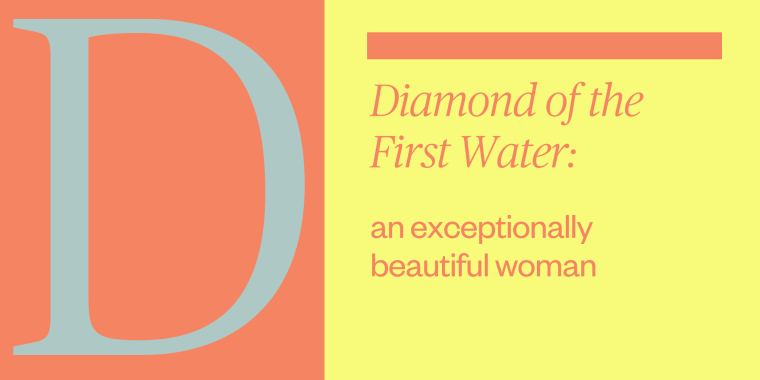
Definition: an exceptionally beautiful woman
The phrase originally was used to describe actual diamonds of the highest caliber, and became an idiom signifying beauty.
How it's used in "Bridgerton:" Queen Charlotte (Golda Rosheuvel) crowns one of the year's debutants “diamond of the first water,” another way of saying “cream of the crop.” Daphne Bridgerton takes that honor in season one; Edwina Sharma is season two’s diamond.
Dowry
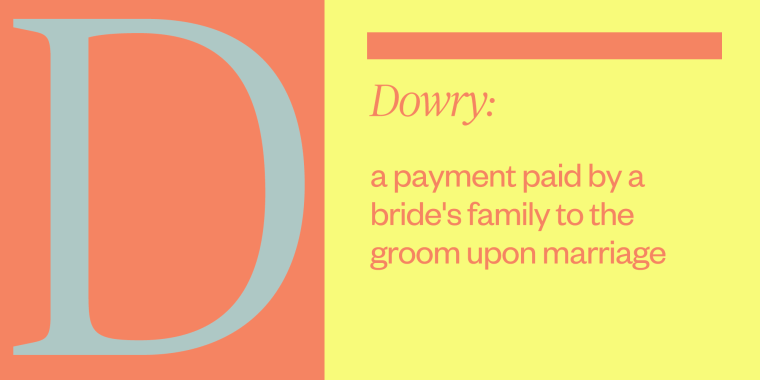
Definition: payment paid by a bride's family to the groom upon marriage
Despite the show's focus on romance, marriage was also a financial and social arrangement, as made evident by the dowry system. A dowry consists of the assets that a bride's family brings to the marriage, whether property or money.
The dowry system allowed parents to arrange and oversee matches and ensure that the young couple would have enough to live on, Wells said.
Wells pointed out that an ample dowry was not required in all matches. "In the case of a woman, extraordinary beauty can sometimes overcome minimal dowry," she said.
How it's used in "Bridgerton:" In season two, Philippa Featherington is only able to marry her love, Mr. Finch, after the new heir, Jack Featherington, pays the dowry owed to her fiancé's family.
Edwina and Kate Sharma have no dowry, but Kate schemes to enlist the financial support of her mother Mary Sharma's (Shelley Conn) parents, the Sheffields, with one stipulation: Edwina must marry a man with a title.
Grosvenor Square
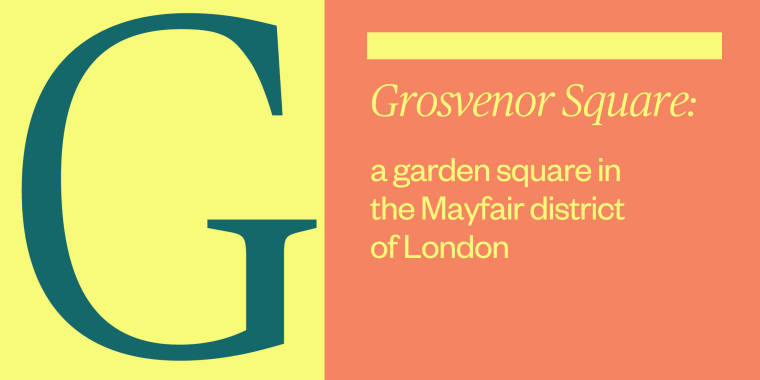
Definition: a garden square in the Mayfair district of London
How it's used in "Bridgerton:" Grosvenor Square is in the center of Mayfair and where the Bridgerton family resides in the show. Filming, however, occurred at the Ranger’s House near Greenwich.
Heir
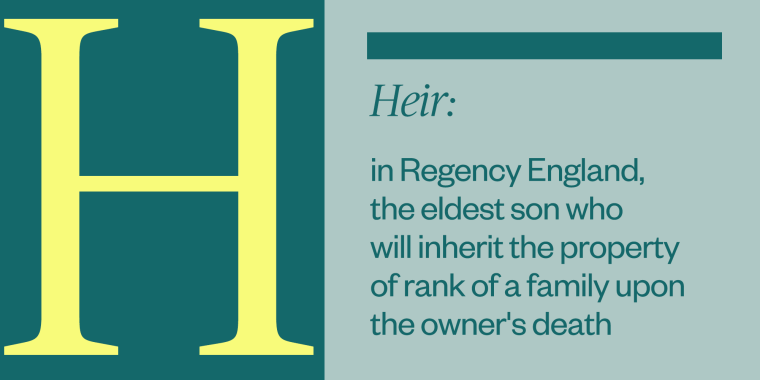
Definition: in Regency England, the eldest son who will inherit the property of rank of a family upon the owner's death
Under the laws of English primogeniture, property and title passed to the eldest son of each family. This system was designed to keep the estate intact and tied to the family name.
How it's used in "Bridgerton:" Since Anthony Bridgerton is his family's oldest son, he becomes viscount after his father Edmund's death. Similarly, in season one, Simon Basset becomes Duke of Hasting after his father dies.
Women could not inherit a hereditary title in Regency England (and still cannot). At the end of season two, the death of Lord Featherington means that Penelope and her family are now at the mercy of the new heir. Jack, introduced in season two, is the next male descendant, and therefore the new Lord Featherington.
Love Match
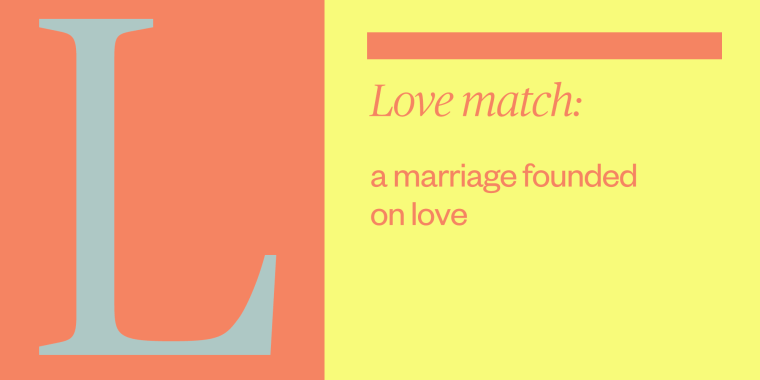
Definition: a marriage founded on love
How it's used in "Bridgerton:" While many marriages in the Regency were decided by economic factors, some were the product of love. Matriarch Violet (Ruth Gemmell) had such a relationship with her late husband, and her wish for her eight children is that they find the same.
By the end of season two, two of the Bridgerton children are happily married with love matches of their own. Only six to go!
Mayfair
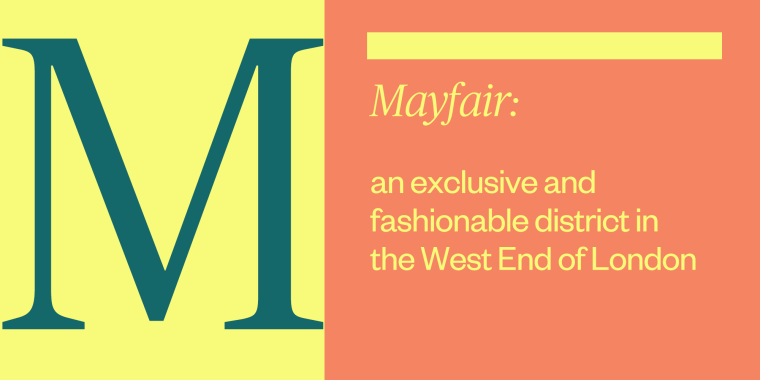
Definition: an exclusive and fashionable district in the West End of London
During the Regency period, Mayfair was one of the most exclusive and wealthiest residential areas in London due to its proximity to Parliament, St. James Palace, shops and entertainment.
How it's used in "Bridgerton:" The Bridgerton family lives in Mayfair, pointing to their status.
Modiste
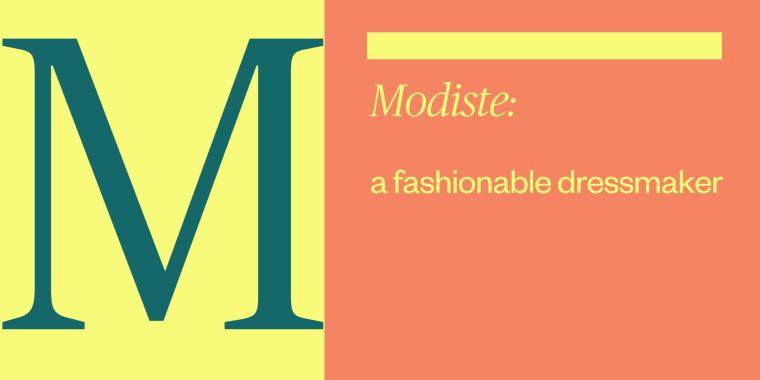
Definition: a fashionable dressmaker
If a lady in the Regency period needed a new dress, she didn't shop off the rack. Rather she took a trip to the modiste, a dressmaker.
How it's used in "Bridgerton:" Madame Delacroix (Kathryn Drysdale) is the go-to dressmaker in town, often working with the Bridgerton and Featherington families.
Pall-mall
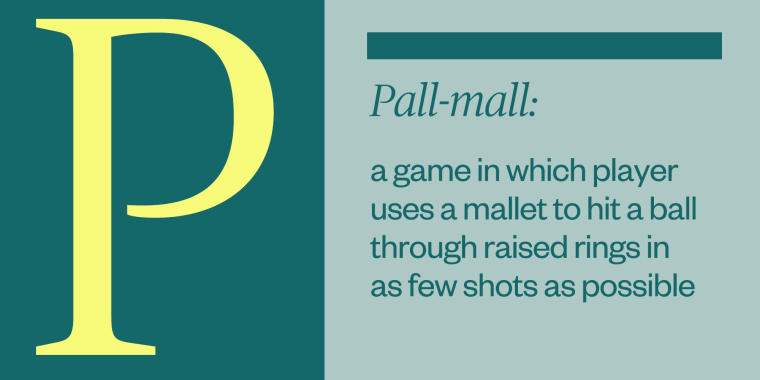
Definition: a game in which player uses a mallet to hit a ball through raised rings in as few shots as possible
Pall-mall originated in the European courts of the 16th and 17th century and was popular in France, Holland and later England, Greig said. Its description bears many similarities to modern day croquet.
How it's used in "Bridgerton:" On her website, Julia Quinn said the scene fans write to her most about is Bridgerton's charged pall-mall game in "The Viscount Who Loved Me."
Pall-mall brings out Kate and Anthony's competitive sides, starting with Kate's selection of the Anthony's favorite mallet, nicknamed "the mallet of death." Their shared approach to the game demonstrates their compatibility.
Promenade
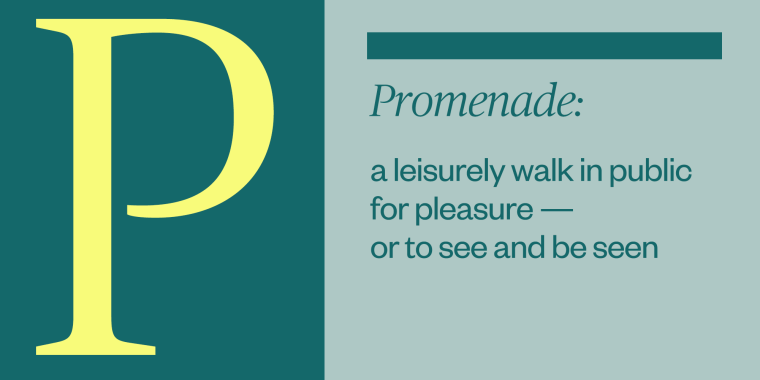
Definition: a leisurely walk in public for pleasure — or to see and be seen
The goal of a promenade was yes, to stroll, but more importantly, to be seen. A promenade is an example of the public activities that allowed eligible ladies to interact with bachelors. During courtship, a promenade publicized the attachment.
How it’s used in "Bridgerton:" In season one, Daphne and Simon concoct a faux courtship plot to make Daphne appear desirable and Simon, unavailable. One of the way they publicize their ruse is through a promenade, turning many eyes in the process.
Then in season two, after Edwina and Anthony publicly call off their wedding, the Sharma and Bridgerton families find themselves shunned during their promenades.
Rake
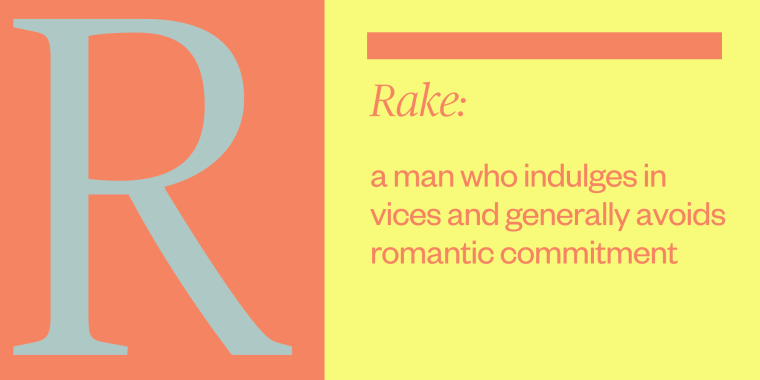
Definition: a man who indulges in vices and generally avoids romantic commitment
A rake is a 19th century term for a womanizer, or a man who flaunts their exploits with woman and avoids any real romantic attachments.
"A rake is flirtatious, possibly slightly unreliable," Greig said. "He is charming, handsome, witty, but is perhaps going to let you down."
“He is charming, handsome, witty, but is perhaps going to let you down.”
Hannah Greig
Another example of a rake is John Willoughby from Austen's "Sense and Sensibility," Wells said. Willoughby made Marianne Dashwood fall in love with him before his sordid past was revealed.
How it's used in "Bridgerton:" Both Simon Basset and Anthony Bridgerton are considered rakes at the start of their seasons, as they've resisted marriage — and both end up happily married reformed rakes.
Regency
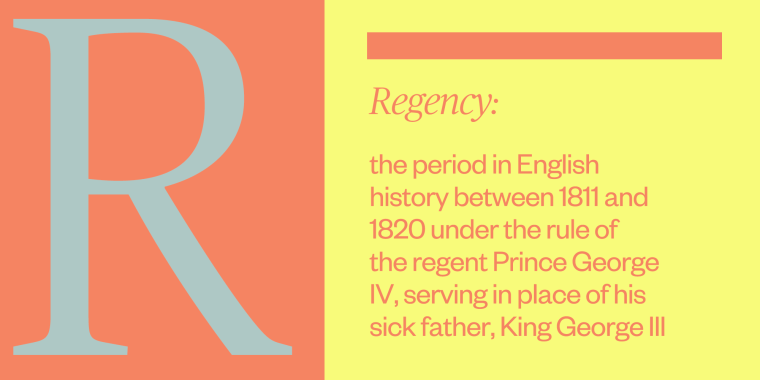
Definition: the period in English history between 1811 and 1820 during which Prince George IV served in place of his sick father, King George III
Situated at the turn of the century, the Regency links the extravagance of 18th century Britain with the discipline and order emphasized during the 19th century Victorian period, Greig said.
"The Regency period bridges that gap, and so it's a time of change," Greig said.
“The Regency period bridges that gap, and so it’s a time of change.”
Hannah Greig
During the Regency period, Britain was at war with Napoleon. At home, the proxy ruler, the Prince of Wales, encouraged culture to flourish and was a patron of the arts. However, he also contributed to overspending and economic upheaval. He was publicly perceived as chaotic, out of control, and dissolute, Greig said.
The works of Jane Austen were also first published during the Regency. In fact, although she dedicated "Emma" to the Prince of Wales, many consider it evidence of her disdain for him.
How it's used in "Bridgerton:" Viewers get a glimpse into the circumstances of the regent's rule. King George III's illness keep him in the palace, shielded by Queen Charlotte from the Ton's gossip and judgment.
"He was not in a position where he could have taken on the roles and responsibilities of being head of the state, of being the king."
Hannah Greig
This illness has often been characterized as the "madness" of King George III. Theories regarding a potential diagnosis abound, Greig said.
"Clearly, he was very unwell," Greig said. "He was not in a position where he could have taken on the roles and responsibilities of being head of the state, of being the king."
Rotten Row
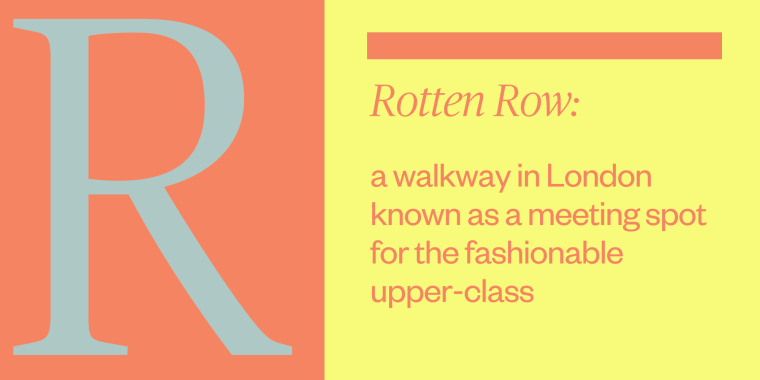
Definition: a walkway in London known as a meeting spot for the upper-class
Rotten Row is a broad track along the south side of Hyde Park in London, where society's elite frequently met for walking or horse riding.
How it's used in "Bridgerton:" In season two, Jack Featherington invites Cressida Cowper for a walk down Rotten Row, an area often mentioned in the original book series.
Snuff

Definition: an early form of tobacco ingested through the nose
How it's used in "Bridgerton:" You may have noticed Queen Charlotte sniffing a substance. She's ingesting snuff, an early form of tobacco.
Spinster
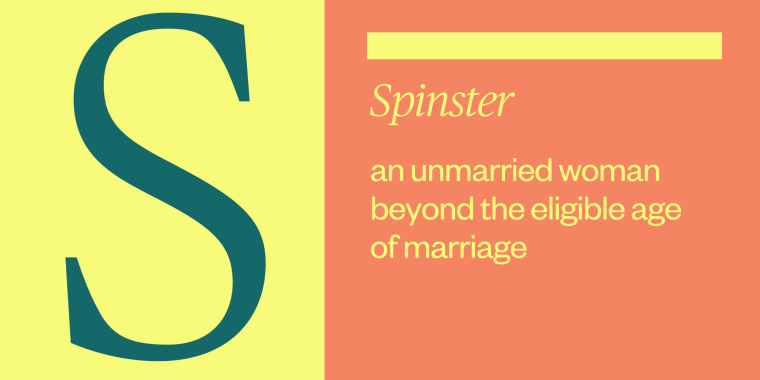
Definition: an unmarried woman beyond the eligible age of marriage
The term "spinster" in the "Bridgerton" era refers to any unmarried woman beyond age 27, generally seen as the end of marriage eligibility in the time period, Greig said. The term tends to have a negative connotation today when used in the context of the period. "It's always carried a slight air of sadness," Greig said.
The term "spinster" was also a legal designation and could carry less of a derogatory undertone in that sense, Wells said. "Women didn't have a profession to list, and 'spinster' was the way of referring to them as an unmarried person," she said.
How it's used in "Bridgerton:" In season two, Eloise asks Kate, who is 26, if she intends to be a spinster. "Everyone tells me it is a fate worse than death," Eloise says.
Kate tells her that the situation is not ideal. "The world is not exactly welcoming to an unmarried woman," Kate responds. "There seems to be no place in society for us except at the edge of things."
But, by the end of season two, Kate is a spinster no longer after her marriage to Anthony Bridgerton.
Sponsor
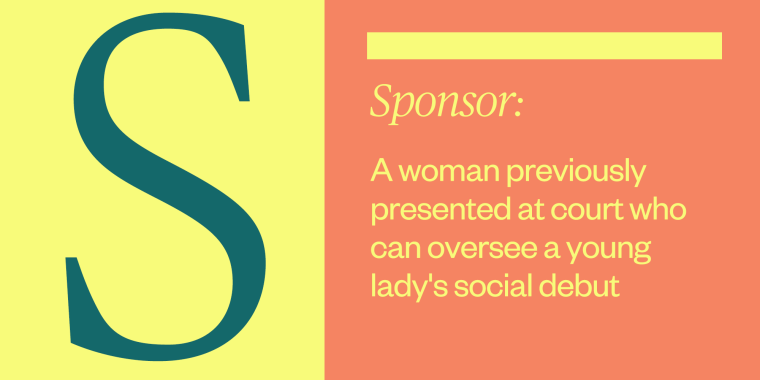
Definition: A woman previously presented at court who can oversee a young lady's social debut
In order for a lady to be presented at court, she had to have a sponsor, someone who could oversee the debutante's social season.
How it's used in "Bridgerton:" Traditionally, a debutante is presented to the the crown alongside her mother, like Violet does with her daughters Daphne and Eloise. In season two, Lady Danbury (Adjoa Andoh) serves as the sponsor for the Sharma sisters, allowing them to stay at her estate and presenting them to the queen.
Ton
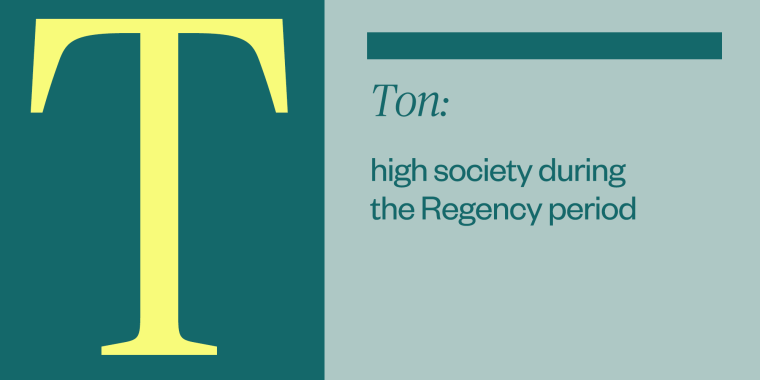
Definition: high society during the Regency period
The Ton refers to the most elite group of British society and is a term derived from the French expression le bon ton, which means "good manners."
"'Ton' is used in Britain from the late 17th to early 18th century to capture a new kind of elite world, a new society who are very much based in London for the season and who are living in this kind of metropolitan, cosmopolitan world," Greig said.
To capture this class of people, they reached for French terms to pinpoint how to define this new social group, Greig said.
How it's used in "Bridgerton:" The Ton is mentioned throughout the show to refer to the broader society that Bridgerton family interacts with everyday.
Viscount
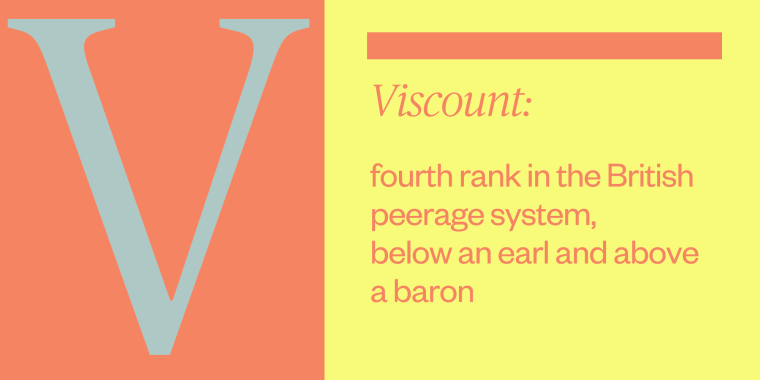
Definition: fourth rank in the British peerage system, below an earl and above a baron
The British peerage system refers to the group of nobles granted status and government power by the crown. The ranks in descending order are: duke, marquess, earl, viscount, and baron.
The social season actually draws its roots from this peerage system, Greig said. In the 18th century, a new constitution dictated that Parliament had to meet in London annually. British aristocratic families found themselves in the same area at the same time of year, creating a robust society and the "perfect marriage market," Greig said.
How it's used in "Bridgerton:" Anthony Bridgerton is a viscount.
